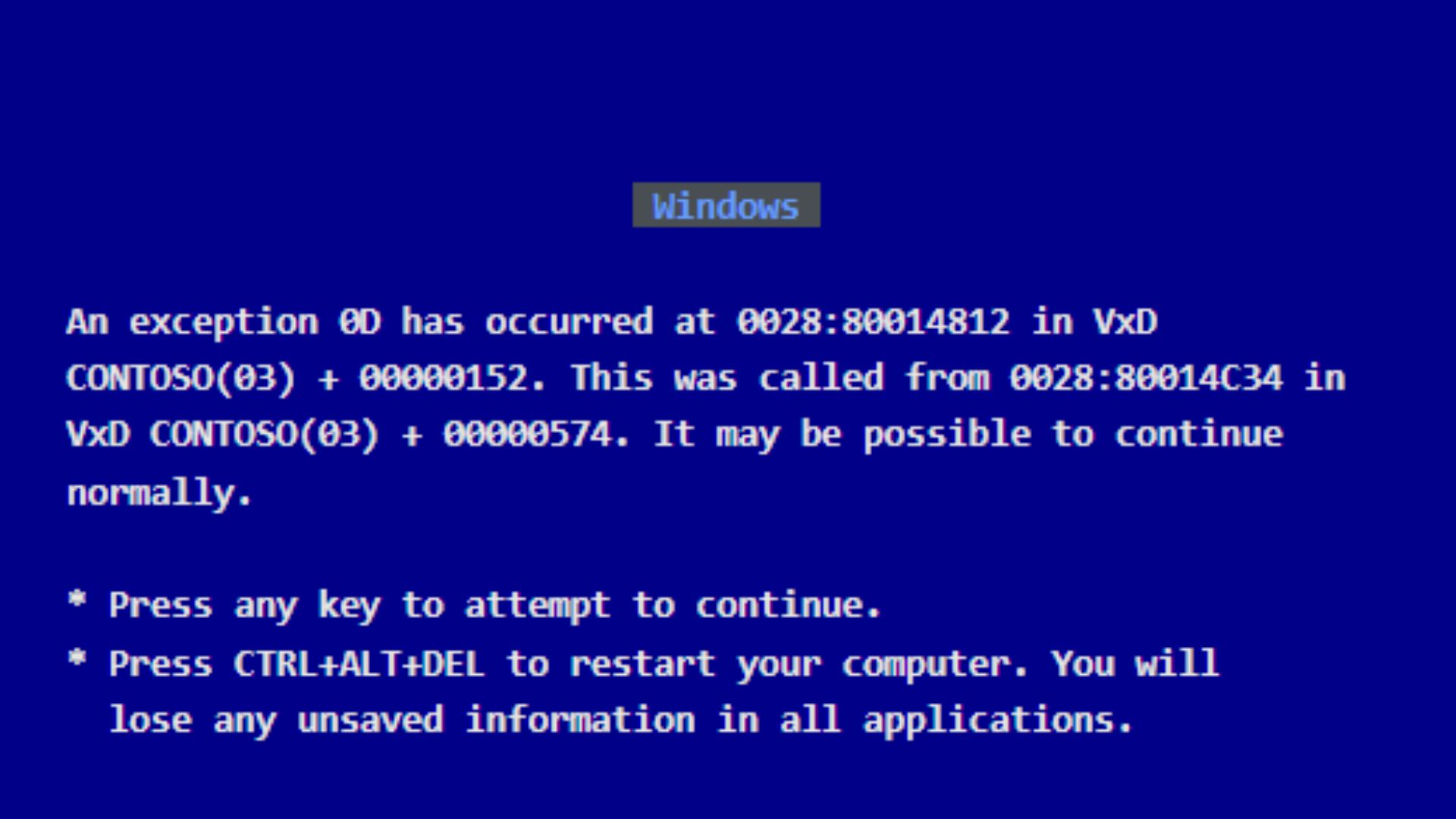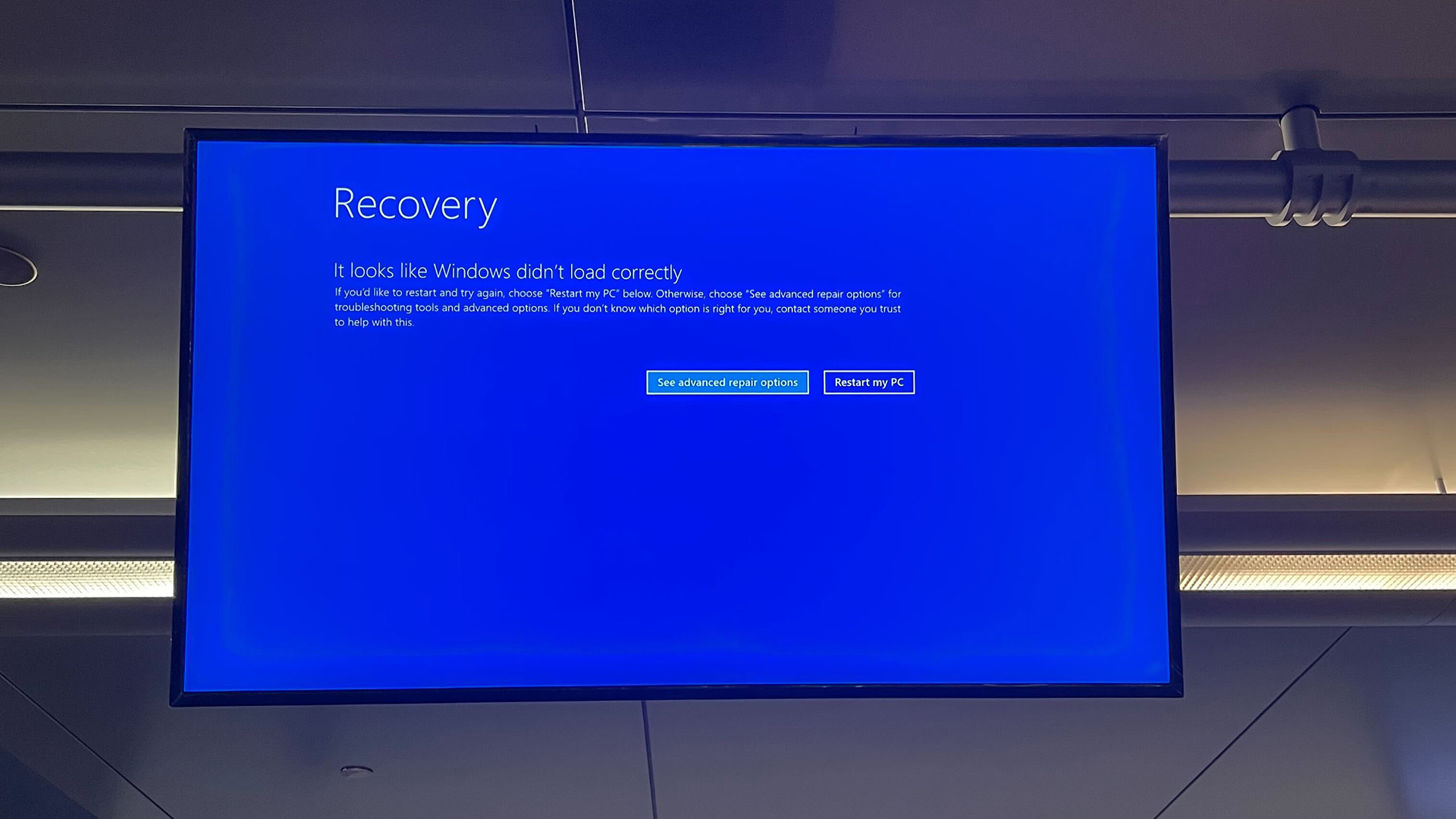
What you need to know
- A Microsoft developer narrates the story behind the Blue Screen of Death in the Windows ecosystem.
- The developer highlights three different Blue Screen of Death errors, each with a different author.
- The developer indicated Windows 3.1 didn't have a BSOD since users got a "black screen of death" when the operating system crashed
What do we know about the dreaded Blue Screen of Death (BSOD) error aside from its annoying nature? "It's a full-screen error that signifies a critical system failure related to a specific operation, which inevitably leads to a total device crash and forced reboot."
Windows users might occasionally encounter the error during an upgrade, startup, or normal use.
There's been an increasing interest in the 'phenomenon,' especially after the CrowdStrike global IT outage that left over 8.5 million Windows devices with dreadful BSOD errors for hours. Veteran Microsoft Software Engineer Dave Plummer (aka Dave's Garage) recently shed light on the matter, explaining the massive outage caused by the faulty kernel driver. He spent most of his time debugging the errors while working at the company.
Interestingly, "there's a 30-year mystery surrounding Microsoft’s Blue Screen of Death." More specifically, who actually wrote the now-infamous BSOD? There's been controversy revolving around who gets credit (or shame).
Adding some confusion to the matter, a 2014 blog post by Microsoft developer Raymond Chen indicated that erstwhile Microsoft CEO Steve Ballmer wrote the text for the Ctrl+Alt+Del dialog in Windows 3.1, which was misconstrued by some to mean he wrote the text for the Blue Screen of Death.
But that's not the case.
Developer Chen has now cleared the air and indicated that Ballmer didn't write the text for the BSOD. In a new blog post from July 30, 2024, Chen indicated, "There is no mystery over who wrote the Blue Screen of Death, despite what some may want you to believe."
🔥The hottest trending deals🔥
-
Seagate Xbox Expansion Card (2TB) | was
$359.99now $249.99 at Best Buy -
Xbox Game Pass Ultimate (3-months) | was
$49.99now $29.89 at CDKeys -
Alienware 34 Curved QD-OLED Monitor | was
$899.99now $699.99 at Dell -
HP Victus Gaming Laptop (RTX 4050) | was
$979now $599 at Walmart
Who wrote the Blue Screen of Death in Windows?

Multiple reports identify Steve Ballmer, John Vert, or Raymond Chen as the BSOD's authors. However, it's not that simple because there are three different blue-colored screens, each with a different author.
Right off the bat, Chen lists the Windows 3.1 Ctrl+Alt+Del screen, which the developer calls a blue screen of unhappiness, not death. Did you know Windows 3.1 didn't have a BSOD? Whenever the operating system crashed, users would get the "black screen of death."
It's worth noting that former Microsoft CEO Steve Ballmer wrote the text Windows 3.1 Ctrl+Alt+Del screen but not the code to display the message.
Next, the Windows 95 kernel error. Chen says most users consider it a Blue Screen of Death, but Windows 95 lets users skip or ignore the error. However, choosing to ignore it might crash your system. The developer admits he didn't write the early version of the Windows 95 blue screen message but brought it to its final form in 1995, which is often misconstrued as Windows NT's Blue Screen of Death.
Finally, John Vert wrote the Windows NT kernel error. Chen calls it the "true Blue Screen of Death" since the system is "unrecoverably dead at this point."
Overall, it's a fascinating trip down the memory hole for what is, like it or not, one of the most unique and defining features of the Windows operating system.
The real question, however, is not who authored the BSOD, but should Microsoft ever try to change it again to something different, and what would that look like?

!["[T]he First and Fifth Amendments Require ICE to Provide Information About the Whereabouts of a Detained Person"](https://images.inkl.com/s3/publisher/cover/212/reason-cover.png?w=600)





